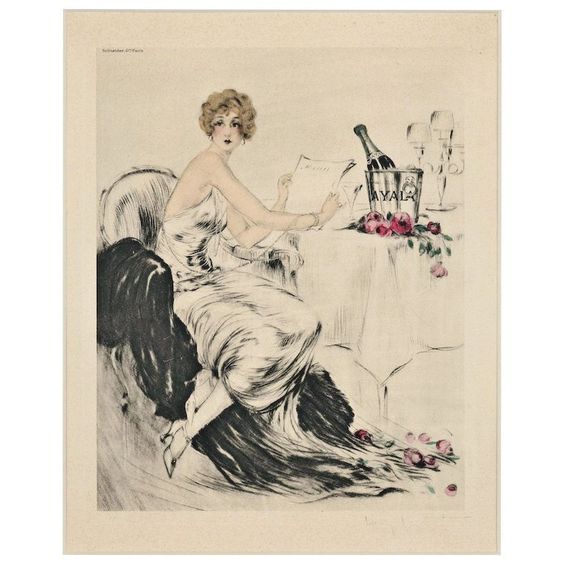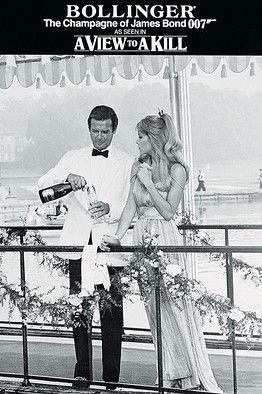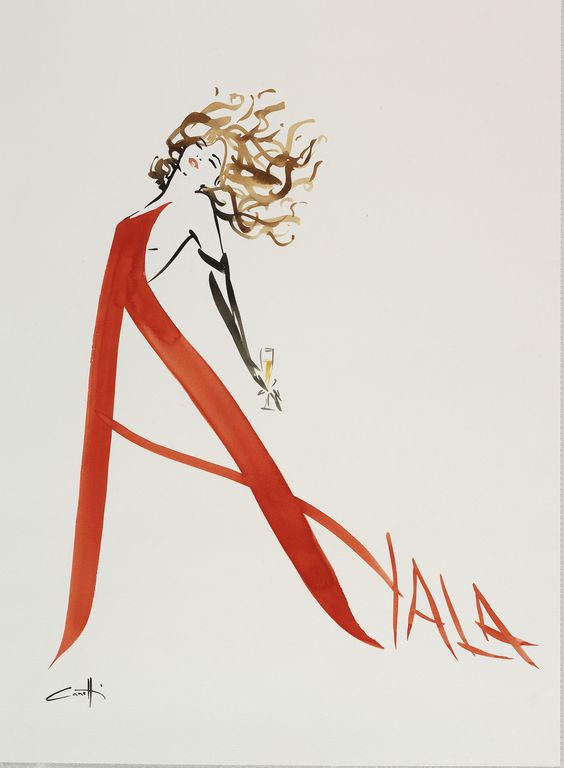A Tale of Two Houses: Ayala and Bollinger Champagne
We’re all super excited for this weekend’s Champagne Tent Events in Hollywood and San Francisco, so we’ve been talking about bubbles all week. I had a chance to chat with Valerie McDaniel, who represents both Bollinger and Ayala, and I learned a ton about these fascinating, historic houses. Ayala and Bollinger are two of the most notable producers in the village of Aÿ, in the heart of the Valle de Marne, and since 2005 they’ve been inextricably linked under the same ownership. But their friendship goes back even further. Ayala’s tale is one of riots and war and golden times, and it’s a great foray into Champenoise history.
Ayala was formerly known as Château de Aÿ, but Edmond de Ayala married his boss’s daughter and inherited a château and vineyards as a dowry in 1860. At that time the style in Champagne was sweeter, using up to 200-300 g of sugar per liter. Ayala was somewhat revolutionary at the time, only using 22g. Edmond’s brother traveled often to the U.K. and started rubbing elbows with various British nobleman, and the family’s dry style of wine quickly spread like wildfire, becoming favored among the Brits. It would become the favorite Champagne of King George VI.
As Champagne became more renowned internationally, the region began to set standards and to codify what constitutes Champagne, in true French style. Famously, they excluded the Aube region in the south from their official definition of Champagne, and this controversy led to full-blown riots in 1911. People were upset about what they saw as an elitist classification, and they were upset about rumors that some houses were secretly using grapes from other places such as Algeria. In the melee, Ayala was almost entirely burned to the ground, with only one wall standing by the end. It would have been completely destroyed, had some prescient individual not thought to take out riot insurance in their policy. It would have been the end of the house. But, the insurance company helped them rebuild. By 1913, Ayala was back in business but the insurance company had gone belly up from the costly restoration.
During the first World War, much fighting took place in Champagne, and the Ayala family fled to the U.K. They asked their neighbors to keep an eye on the house during the German occupation—these neighbors were the Bollinger family, in what would be the beginning of a long friendship between the two houses. Bollinger would wire intel to the Ayalas in U.K., apprising them of what was happening while 300 German military personnel occupied their château. When the Ayalas returned they came home to a cellar that was 700 bottles lighter and an IOU from a German lieutenant. The Ayalas never redeemed it.
The Roaring 20s was the golden era for Ayala. They were producing up to 1 million bottles a year, a number that they hadn’t been able to reach again until just this last year. Ayala Champagne was very popular in bohemian Paris and in New York, but was also a well-loved tipple by American diplomats. In fact, there are old menus from a Presidential inauguration at the Waldorf Astoria, and Ayala is the first Champagne listed out of the 10 served. This was a boon era for the house, with beautiful advertisements in magazines everywhere. Unfortunately, the economic crisis in the 1930s changed their fortunes, and the family sold the house.
For the next 75 years, the house underwent many ownership changes until finally, in 2005, the neighboring Bollinger family stepped in and purchased the house. With their very different styles—Bollinger uses a much higher percentage of Pinot Noir, with fermentation in neutral oak barrels vs. Ayala’s penchant for Chardonnay and stainless steel—Bollinger and Ayala are something of a marriage of opposites. Yet somehow it works beautifully, and both houses are thriving. Since 2005, Ayala has built a young and dynamic company—the whole house is run by only 17 people, and their average age is 34. The winemaker, Caroline Latrive, is in her 30s, and is one of only three female winemakers among all the larger Champagne houses. She’s a powerhouse who was born and raised in Champagne. Previously, she was working at Bollinger, and she tells a story that shows she’s landed in the perfect place: One of Bollinger’s top execs asked her what she thought about the year’s harvest, and she went on to wax poetic about the Chardonnay—which, basically stopped the conversation short since Bollinger is a Pinot Noir-focused house. At Ayala she can pursue her passion for crisp Chardonnay to her heart’s content. Her style is crystalline, dry, and racy Chardonnay—a vibrant expression of her favorite grape.
This historic house has been a deep part of Champenoise history, but they’re making thoroughly modern, exciting wines. Stop by the Ayala and Bollinger tent this week to taste them both!
- Kate Soto



